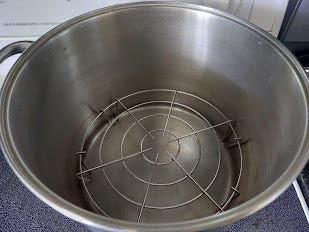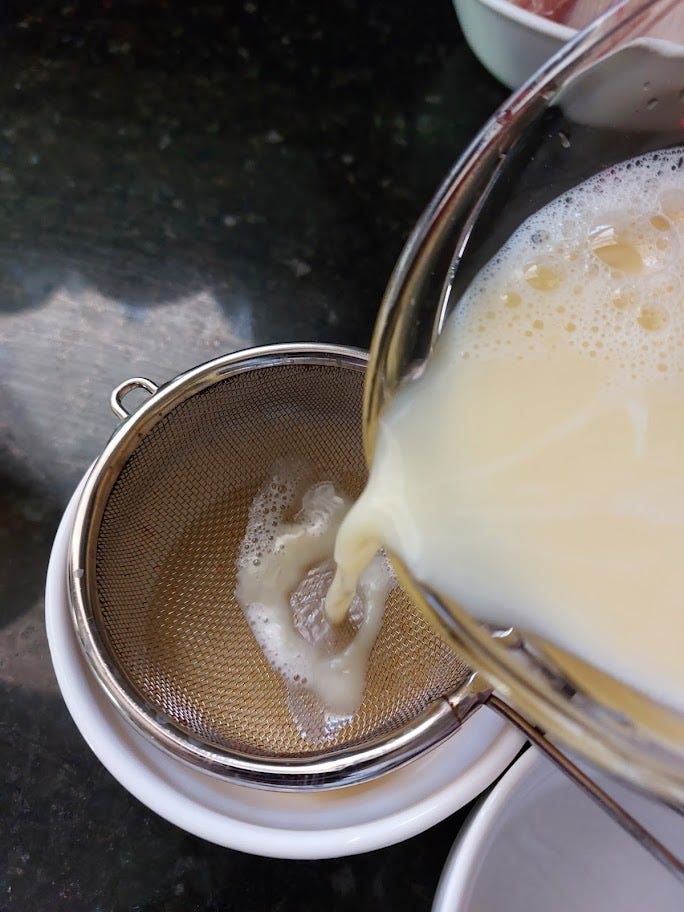It is often said that the pleats in a chef’s toque represent the number of way they can cook an egg. It’s a nice story though I’m not sure it’s true, but I can tell you that there are an awful lot of ways to cook one of nature’s most versatile foods.
Yet most of us return to the same cooking methods over and over again - scrambled, poached, boiled, and the various variations on fried like sunny side up or over easy. And there’s nothing wrong with that at all. There’s an egg that suits nearly everyone’s taste or mood.
But there are plenty of ways to get cracking that might surprise you, and I’m going to show you one that is both simple and super impressive. Not only that, it makes a perfect blank canvass for your creativity and personal taste. It’s a little more involved than a weekday morning scramble, but can easily be an appetizer for a fancy meal or an especially decadent snack if you’re so inclined.
I’m not sure the origins of steamed egg but it features prominently in several Asian cuisines. If you’ve heard of the Japanese chawanmushi or Korean gyeran-jjim you’ve got the idea, but I’m going to keep this simple and show you the basic technique and leave the flavours up to you.
This is easy AND impressive… you’ll see.
Like so many of the techniques I love this is another ratio. I love ratios because they allow you to cook without a recipe and scale up or down pain-free. And you’ll like this one too because it’s a ratio by volume instead of weight, meaning your measuring cups will serve you just fine.
The Gear:
Bowl
Whisk or fork
Fine mesh strainer
Ramekins or heat-proof bowls
Liquid measuring cup
Large pot with lid
Thermometer (or your clean index finger)
Tongs
Plastic wrap
Small knife
Steaming rack/basket or bamboo steamer
The Ingredients:
Eggs
Water
Salt
Pepper (I used white pepper)
Garnishes of your choice (I’ll explain)
The ratio for steamed eggs is 2 parts water to 1 part eggs, salt and pepper to taste.
The technique:
Add a few inches of water to your pot and set up steaming rack/basket or bamboo steamer. Start bringing the water to a boil.
Whisk your eggs until they are no longer stringy. This ensures a smooth texture.
Pour eggs into a measuring cup. The volume of water you will need is double that of your eggs. My two large eggs = half a cup, so I’ll need 1 cup of water. See? Easy!
Pour eggs back into bowl.
Fill cup to the appropriate volume with warm (115F or so) water. It should feel warm, but not hot, to the touch. If you aren’t sure use half boiling water mixed with half cool tap water - it works out almost exactly.
Stir water into the eggs and combine thoroughly.
Season with a few pinches of salt and pepper. If you aren’t grossed out by raw egg feel free to taste it - it’s the best way to know!
Pour egg/water mixture back into the measuring cup. Any vessel with a spout would work, but the measuring cup ensures your portions are even.
Place strainer over each ramekin/bowl and pour mixture through, filling nearly to the top. The strainer helps avoid bubbles in your eggs.
Cover each ramekin/bowl with plastic wrap and poke a few holes with your knife. The plastic wrap ensures that condensation from the pot lid doesn’t drip back into the eggs.
Carefully place ramekins/bowls in the steamer, turn the heat down to medium (a good simmer) and cover pot with lid.
Set timer for 10 minutes. If you are using particularly deep ramekins/bowls add another minute or two. I did mine about 11 minutes.
After the timer beeps turn off the heat and set another timer for 4-5 minutes. Leave pot covered. The eggs will continue to set, but more gently with only the residual heat.
Once timer beeps again CAREFULLY remove ramekins/bowls from steamer and place on a rack, plate, or other heat-proof surface.
Give your eggs a gentle wobble. They should be very wobbly and barely set, but not watery. Pop them back in the pot and cover for another few minutes if they still seem liquidy.
Remove plastic wrap. If you’ve used pepper you might notice that it’s clustered a bit on the surface. No worries - it’s fine.
Garnish as you like. For a pretty effect used your knife to cut a cross-hatch pattern. Not only does this look cool, it also allows any sauces you add to permeate the eggs.
And, I mean, check this out! Beautiful delicate soft eggs! I used a bit of soy sauce, sesame oil, chili crisp, and green onion to garnish, but you can add whatever you’d like. The texture is well-suited to Asian flavours, but you could do pesto and finely diced tomato, fresh steamed asparagus tips and tiny brunoise of radish, or whatever herbs, sauces, and various bits you have. The eggs are the canvass and your fridge supplies the paints.
And if you want even more flavour, feel free to substitute chicken or vegetable stock in for the water. Chawanmushi uses dashi and mirin as seasoning and it’s divine. Feel free to bury little bits of stuff at the bottom of your ramekins too - a few peas, a bit of seafood, or whatever you can imagine. Par-cook and drain/pat dry anything that might take too long to cook or that would shed a lot of liquid.
This could, maybe, just possibly, become your favourite way to make eggs. It’s easy, the ingredients are simple, it’s versatile, and it feels fancy and indulgent. Who would have have guessed that just eggs and water can make something that is both an indulgent comfort food and a fancy, show-offy treat? No need to get steamed about your next dinner party - you’ve got this one!











